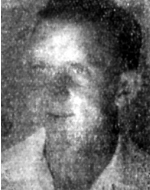In June 1940, nine months after the start of World War II, Yitzhak, the son of Perl (Pnina) and Moshe, was born on October 10, 1929 in Romania, in the city of Khotin in the region of Bessarabia, the only son of his parents, , The Soviet Union conquered Bessarabia, in early coordination with Germany, and a year later the alliance between the two countries dissipated, and Germany (with Romania) entered Bessarabia, and immediately afterwards gave the Romanians the territory of Transnistria in western Ukraine. Jews, the Jews of Bessarabia, Bukovina, and northern Moldavia, who also numbered hundreds of thousands, were deported on September 15, 1941, Until the end of 1942. The Jews were concentrated in the camps and were forced to work until the end of the war, and more than 100,000 of the Jews of the area perished, and the entire family of Yitzhak was deported to Transnistria, where only the boy who found refuge in the home of a Ukrainian peasant After the liberation of Romania, Yitzhak returned to Bucharest, where he lived for a while until his immigration to Eretz Israel in 1945. At the end of that year Yitzhak worked in the “Women’s Farm” in the Borochov neighborhood of Givatayim, He soon learned the agricultural work and wondered about the life of the country. After completing his training, he moved to his uncle in Ra’anana, where he began studying frameworks. He specialized in this work and produced a number of delicate works, such as a fine menorah and other items. As soon as the UN General Assembly decided to partition the country, on November 29, 1947, Yitzhak joined the Haganah and joined the 32nd Battalion of the Alexandroni Brigade, Part 3. He participated in many activities in the central region: Salameh, Hiriya, Sakiya and Kafr ‘Anu, in a battle for the Tel Litvinsky camp and for Arab Kfar Saba. In May 1948 Yitzhak participated in Operation Yuval. The “Jubilee” operation in the Wadi Ara area, northeast of Hadera, was initiated by the Haganah headquarters in early May 1948 to attract enemy forces and to distance them from the Mishmar Ha’emek area, which was under the control of Jewish forces after the fierce fighting there in April 1948. Alexandroni forces left (May 8, 1948) towards Kfar Kara, stormed him in the morning and managed to conquer part of it. But large Arab reinforcements called from all over the area began to attack the fighters, who suffered losses and at some points had to retreat. Despite the withdrawal, the objective of the operation was achieved: large Arab forces evacuated the Mishmar Haemek area, and were not based on it for the expected invasion of the Arab armies. In the battle in Kfar Kara, Yitzhak fell. Eighteen years old in his fall. He was laid to rest in the military cemetery in Netanya. This hero is a “last scion”. The survivors of the Holocaust are survivors of the Holocaust who survived the last remnant of their nuclear family (parents, brothers, sisters, sons and daughters) who experienced the Holocaust in the ghettos and / or concentration camps and / or in hiding and hiding in territories occupied by the Nazis and / Or in combat alongside members of the underground movements or partisans in the Nazi-occupied territories who immigrated to Israel during or after World War II, wore uniforms and fell in the Israeli army.
